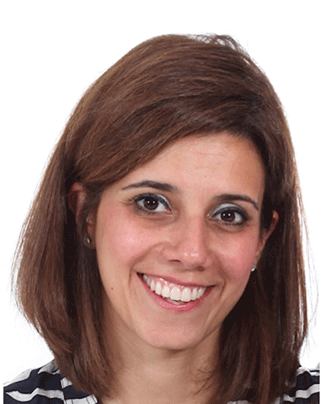
ORBITA (Objective randomised blinded investigation with optimal medical therapy of angioplasty in stable disease)—the first-ever sham controlled trial of percutaneous coronary intervention (PCI)—indicates that PCI for stable angina does not significantly improve exercise time compared with optimal medical therapy. However, according to some reports, the lack of use of physiological assessment to guide intervention may have distorted the results.
Speaking at the 2017 Transcatheter Cardiovascular Therapeutics (TCT) meeting (29 October–2 November, Denver, USA), Rasha Al-Lamee (Imperial College London, London, UK) commented that, in the context of stable angina, “we have never understood how much of the therapeutic effects of PCI are due to PCI itself and how much are due to a placebo effect. There has never been a placebo-controlled trial on the subject”. Therefore, the aim of ORBITA was to compare placebo (or a sham procedure) with PCI for patients with stable angina. Al-Lamee stated that the primary hypothesis of the study was that “PCI increases exercises time more than placebo procedure”.
Patients with stable angina were included in the study if they had one or more angiographically-severe (≥70%) stenosis in a single vessel and were suitable for PCI. After a six-week medical optimisation stage (in which antianginal medication was initiated/up titrated to guideline-directed levels), patients underwent research angiogram, instantaneous wave-free ratio (iFR), or fractional flow reserve (FFR). However, investigators were blinded to the iFR/FFR results and, therefore, did not use physiological assessment to determine the need for intervention.
Overall, the mean area stenosis (by quantitative coronary angiography) was 84.4%, mean FFR was 0.69, and mean iFR was 0.76. Nearly a third of patients (29%) had a FFR greater 0.80 (ie. above the threshold for intervention) and 32% had a iFR greater than 0.89. Gregg Stone (New York Presbyterian Hospital, Columbia University Medical Center, New York, New York), speaking after the study had been presented at TCT, said that these patients “should not have had angioplasty”.
Patients were subsequently randomised to undergo PCI (105) or a sham procedure (95). To ensure patients were blinded to their procedure, they were sedated and were auditory isolated. Additionally, the recovery staff were also blinded to the procedures that the patients had undergone.
Prior to procedure, in both groups, mean exercise time was approximately nine minutes. At six weeks post procedure, exercise time had significantly increased by 28.4 seconds in the PCI group (p=0.01) and non-significantly increased by 11.8 seconds in the sham procedure group (p=0.235). However, the difference between groups was not significant (16.6 seconds; p=0.200). There were also no significant differences between groups in most of the secondary outcomes, including improvement in angina grade, quality of life scores, and Duke treadmill score. Dobutamine stress echocardiography peak stress wall motion score index, however, improved more with PCI than with placebo (p=0.011).
Al-Lamee concluded: “In this single-vessel, angiographyically-guided trial, there was no difference in exercise time increment between PCI and placebo”. However, she added that that “we might imagine that if we extended this study to include multivessel disease patients with a higher ischaemia burden, the same results would not apply”. Al-Lameee also observed that results might have different if physiological assessment had been used in the inclusion criteria.
Responding to the results, Martin Leon (Center for Interventional Vascular Therapy, Columbia University Medical Center, New York Presbyterian Hospital, New York) claimed that the results “did not disturb” him because—given that the patients had “very good functional capacity and infrequent angina” at baseline—there was “very little” that could have been demonstrated in terms of therapeutic benefit “regardless of what you did to the coronary artery”.
Following on from the views expressed by Leon and Stone, who noted that the study patients’ angina was really on mild side”, Allan Jeremias (St. Francis Hospital, Roslyn, New York; Cardiovascular Research Foundation, New York, New York) claimed that one of the lessons of ORBITA was that “we cannot guide our angioplasty solely by the angiogram. We have to use physiological assessment and the physical context that the patient presents”.
Coinciding with its presentation at TCT, ORBITA was simultaneously published in The Lancet. In an accompanying commentary, David L Brown (Cardiovascular Division, Washington University School of Medicine, St Louis, USA) and Rita F Redberg (Division of Cardiology, University of California-San Francisco, San Francisco, USA) have a different take on the trial from that of Leon, Stone, and Jeremias. They claim that the implications of ORBITA are “profound and far-reaching”, commenting: “First and foremost, the results of ORBITA show unequivocally that there are no benefits of PCI compared with medical therapy for stable angina, even when angina is refractory to medical therapy.” They add that, based on the findings of the study, “all cardiology guidelines should be revised to downgrade the recommendations for PCI in patients with angina despite medical therapy”.
Responding to this commentary, Al-Lamee told Cardiovascular News extrapolating the findings of ORBITA to prompt changes to the guidelines “would be an over-reach”. She noted that the study “only addressed patients with stable angina and single vessel coronary disease on intensive medical therapy”.
She added that—aside from any implications it may have for the management of stable coronary artery disease—ORBITA shows “that placebo-controlled trials in intervention are possible and do provide invaluable extra information which is of interest to clinicians and patients alike”. “All it takes is an enthusiastic group of investigators who want to answer a specific clinical question and a committed group of patients who are happy to take part in ground-breaking research,” Al-Lamee observes.












